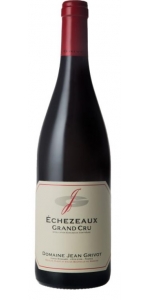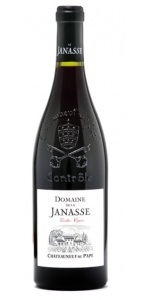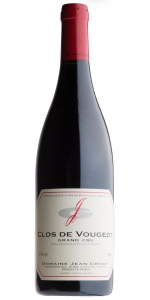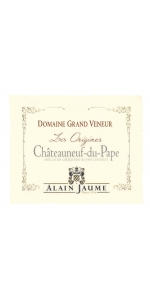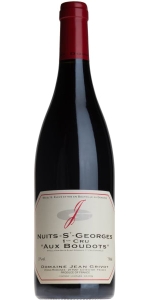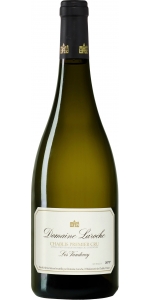Domaine Meo-Camuzet Echezeaux Les Rouges Du Bas Grand Cru 2020
4 bottles with free shipping for: $2,500.00
| BUY MORE! SAVE MORE! | ||||||||||||||||
|
| Country: | France |
| Region: | Burgundy |
| Winery: | Meo-Camuzet |
| Grape Type: | Pinot Noir |
| Organic: | Yes |
| Vintage: | 2020 |
| Bottle Size: | 750 ml |
Échezeaux is loyal to its appellation through the finesse of its attack on the palate and its overall balance. But it's also a wine with pronounced acidity, which gives it freshness and structure and bestows upon it a sometimes austere finish.
For more than four centuries, the members of the Méo family have devoted themselves to growing vines and making wines. They came originally from the Burgundy village of Selongey, in the north of Côte d'Or, where today, even if the vines, alas, have disappeared, a pressing house, dating from the year 50 AD, bears witness to the presence there of Gallo-Roman winegrowers.
From the 19th century onwards, the Méo children chose the course of study. The great-grandfather of Jean-Nicolas, for example, was a primary-school teacher, his grandfather graduated from the École Nationale des Ponts et Chaussées (civil engineering) and his father, Jean Méo, was a graduate of the École Polytechnique and an engineer in the Corps des Mines. Jean was later to be elected a Member of the European Parliament and sat on the Council of Paris.
It was thanks to Jean Méo's mother, Marcelle Lamarche-Confuron, originating from an old winegrowing family in Vosne (with already a small activity as négociants), that the Méos came to settle in Vosne-Romanée.
Jean Méo's grandmother was the first cousin of Étienne Camuzet, a very colourful character.
Étienne Camuzet (1867-1946) was a winegrower in Vosne-Romanée, mayor of the village and also an MP for Côte d'Or from 1903 to 1932. In 1920, he had the opportunity to purchase the Château du Clos de Vougeot with some of the vines, but instead of living there, he preferred to lodge his tenant farmers in it (indeed, because of his political activities, he no longer had time, himself, to look after his own vineyards). He was to sell it in November 1944: not surprisingly, the château had suffered during the war. He had (already!) understood the importance for Burgundy to have a "temple” to help promote its wine. Étienne Camuzet thus chose to pass it on to the Confrérie des Chevaliers du Tastevin.
As for the vines, it was the 20 hectares (50 acres) at the top of the Clos that were for sale ... Étienne Camuzet enlisted the help of his fellow winegrowers from Vosne-Romanée to acquire them. He would keep 3 hectares (7.5 acres) himself, immediately below the château.
Following the death of Étienne Camuzet, his daughter, Maria Noirot, inherited the estate from her father and retained the tenant farmers. She had no children, however, and when she died, in 1959, she bequeathed the estate to her nephew, Jean Méo, who at that time had already left Vosne-Romanée, and since 1958 had been a member of General de Gaulle's cabinet. Having been regularly in close contact with his uncle, who had shared with him his passion for the vine, teaching him to respect and love wine, the youngest of the Méos could not allow the winegrowing saga of the family to come to an end. He decided, therefore, to take the estate in hand, with help from his father, Gaston, initially, and then from his mother. In that way, Jean Méo was able to remain with General de Gaulle and to pursue his career in Paris, which would lead him to manage in succession several large companies: ELF, France Soir, Agence Havas, Institut Français du Pétrole and others. He was also elected to the European Parliament and sat on the Council of Paris. Throughout that period, he relied on four tenant farmers, including the great winegrower, Henri Jayer, who was one of the first to control temperatures systematically during vinification, always bringing out the freshness and the fruit, thus making the nose and the texture of the wine more attractive. Jean Méo was to manage the estate from 1959 to1984, after which he called upon the new generation.
In 1981, the Camuzet estate became Méo-Camuzet, and the first wines bottled under that name were those of the 1983 vintage.
Domaine Jean Grivot Echezeaux Grand Cru is made from 100 percent Pinot Noir.
Domaine Jean Grivot is among the great names in Burgundian wine. Étienne Grivot and his wife Marielle took over from Étienne’s father Jean Grivot in 1987. The vineyards are densely planted and farmed organically “sans certification” while the aim in the cellar is for balance and clear expression of terroir.
Jean Grivot’s 15.5 hectares spread across 22 appellations with vineyards in the communes of Vosne-Romanée, Vougeot, Chambolle-Musigny, and Nuits-Saint-Georges. Besides the three grand crus, there are 8 premier crus including the much lauded Les Beaux Monts and Suchots in Vosne-Romanée. The grapes are completely de-stemmed and fermentation is spontaneous.
About the Vineyard:
Echézeaux grand cru is a large vineyard of 38 hectares divided into 11 individual climats. Grivot’s parcel is in the climat of Les Cruots and lies at the southern end of Echézeaux near the premier cru of Les Suchots. A good Echézeaux should have rich fruit, considerable earthiness, and be very complete on the palate.
Tasting Notes:
The wine shows aromas and flavors of red berries, herbs, and purple flowers. The palate is rich with ripe fruit and medium weight with bright acidity and fine tannins. Aging in 40-70% new Burgundian pièce brings notes of vanilla, toast, and baking spices.
Food Pairing:
Red Burgundy might be the world’s most flexible food wine. The wine’s high acidity, medium body, medium alcohol, and low tannins make it very food-friendly. Red Burgundy, with its earthy and sometimes gamey character, is a classic partner to roasted game birds, grilled duck breast, and dishes that feature mushrooms, black truffles, or are rich in umami.
Review:
A very elegant expression of Echezeaux, with a velvety black plum and rose petal fruit. There is a lovely freshness and so much finesse that the tannin and structure might surprise you at the end. This has the substance to age for decades. Produced from a 0.84ha parcel in Cruots next to Comte Liger-Belair. The vines were planted in 1954 and the destemmed fruit was gently fermented.
This is pure, racy and enticing, hosting aromas and flavors of black currant, blackberry, violet and iron. This is about finesse, grace and precision balance, with saturated fruit flavors persisting on the superlong aftertaste. Needs a decade in the cellar.
-Wine Spectator 97 Points
Domaine de la Janasse Chateauneuf-du-Pape Cuvee Vieilles Vignes is made from 65% Grenache, 20% Mourvèdre, 10% Syrah, 5% divers.
In contrast to Chaupin, which is made from old-vine Grenache on sandy soils, the cuvée Vieilles Vignes is from old vines of Grenache, Mourvedre, Syrah along with smaller percentages of other permitted varieties that are grown in these old vineyards. The wine is sourced from 4 terroirs: pebbly clay, sand, gravelly red clay and sandy limestone. Vieilles Vignes is always the most powerful and concentrated Châteauneuf-du-Pape cuvée made at Domaine de la Janasse.
Review:
The 2020 Châteauneuf Du Pape Vieilles Vignes also saw some stems (the estate started keeping some stems with the 2016 vintage) and was 75% destemmed, with the blend being 70% Grenache, 20% Mourvèdre, and the rest Syrah, Cinsault, and Terret Noir. As usual, it’s a more powerful, black-fruited wine comparted to the Cuvée Chaupin and has lots of crème de cassis, liquid violet, crushed stone, woodsmoke, and peppery herbs. It displays the vintage’s purity and freshness yet brings the concentration as well as the structure. I’ll be shocked if it’s not in the handful of top wines in the vintage.
-Jeb Dunnuck 96-98 Points
Domaine Jean Grivot Clos de Vougeot Grand Cru is made from 100 percent Pinot Noir.
Domaine Jean Grivot is among the great names in Burgundian wine. Étienne Grivot and his wife Marielle took over from Étienne’s father Jean Grivot in 1987. The vineyards are densely planted and farmed organically “sans certification” while the aim in the cellar is for balance and clear expression of terroir.
Jean Grivot’s 38.3 acres spread across 22 appellations with vineyards in the communes of Vosne-Romanée, Vougeot, Chambolle-Musigny, and Nuits-Saint-Georges. Besides the three grand crus, there are 8 premier crus including the much lauded Les Beaux Monts and Suchots in Vosne-Romanée. The grapes are completely de-stemmed and fermentation is spontaneous.
About the Vineyard:
Clos de Vougeot grand cru was acquired by Étienne’s grandfather, Gaston Grivot, in 1919. The total holding is 4.6 acres from the middle of the vineyard to the lower wall and the average vine age is 40 years old. A good Clos de Vougeot should be a complete wine without any one feature standing out. It is a perfect balance of power, aroma, and flavor.
Wine Production:
The grapes are destemmed and maceration à froid usually lasts just a day or two. The alcoholic fermentation is spontaneous and malolactic fermentation occurs in barrel. Depending on the vintage, the proportion of new oak is around 40-70% percent for the grands crus.
Tasting Notes:
The wine shows aromas and flavors of red berries, herbs, and purple flowers. The palate is rich with ripe fruit and medium weight with bright acidity and fine tannins. Aging in 40-70% new Burgundian pièce brings notes of vanilla, toast, and baking spices.
Food Pairing:
Red Burgundy might be the world’s most flexible food wine. The wine’s high acidity, medium body, medium alcohol, and low tannins make it very food-friendly. Red Burgundy, with its earthy and sometimes gamey character, is a classic partner to roasted game birds, grilled duck breast, and dishes that feature mushrooms, black truffles, or are rich in umami.
Review:
This round version is packed with ripe black cherry, violet, graphite and tobacco flavors. The silky texture and vibrant acidity work in tandem, while refined tannins provide support without getting in the way. There are a few edges to be worked out, yet this is long and concentrated.
-Wine Spectator 95 Points
Grand Veneur Chateauneuf-du-Pape Rouge Les Origines is made from 50% Grenache, 30% Mourvedre and 20% Syrah
Matured in vats (grenache) and in oak casks (syrah and mourvèdre).
Deep and brilliant, purple-red colour. An exciting nose with aromas of black fruit (blackcurrant, cherry) spices and vanilla. This great aromatic complexity is found on the palate : the spices and ripe fruit appear with an elegant woodiness and harmonious tannins. The finish has good aromatic length and introduces a touch of liquorice and pepper.
A terrific Châteauneuf du Pape with great concentration and finesse.
Best between 2 and 20 years. Best to decant if young (less than 5 years old).
Soil type Extreme north of Châteauneuf du Pape. This plateau is made with a high quantity of red clay mixed with rocks. This area is considerated to be one of the best to produce rich and powerful red wines. By definition, LES ORIGINES will always deliver a great complexity and ageing potential. Winemaking & ageing Harvest is sorted by hand, destemmed and crushed. Fermentation temperature is controlled at 30°C. Vatting period of 18 to 20 days. Matured in vats (grenache) and in oak casks (syrah and mourvèdre).
Review:
"The huge nose of violet pastilles, mulberries, smoked bacon and a touch of hot asphalt pulls you into this expansive but beautifully balanced Chateauneuf that’s packed with fine, powdery tannin. So much bitter-chocolate character, but this exactly matches the deep fruit and, at the long crescendo finish, there are fascinating balsamic and hot dry-earth touches. Drinkable now, but best from 2025."
- James Suckling (March 2022), 94 pts
Domaine Jean Grivot Nuits-Saint-Georges Premier Cru Aux Boudots is made from 100 percent Pinot Noir.
Domaine Jean Grivot is among the great names in Burgundian wine. Étienne Grivot and his wife Marielle took over from Étienne’s father Jean Grivot in 1987. The vineyards are densely planted and farmed organically “sans certification” while the aim in the cellar is for balance and clear expression of terroir.
Jean Grivot’s 38.3 acres spread across 22 appellations with vineyards in the communes of Vosne-Romanée, Vougeot, Chambolle-Musigny, and Nuits-Saint-Georges. Besides the three grand crus, there are 8 premier crus including the much lauded Les Beaux Monts and Suchots in Vosne-Romanée. The grapes are completely de-stemmed and fermentation is spontaneous.
Nuits-Saint-Georges Aux Boudots 1er cru lies in the “Zone Vosnoise” or northern end of Nuits-Saint-Georges just below Les Damodes. It borders Vosne-Romanée Aux Malconsorts 1er just to its north. Its position slightly lower on the slope with deep soil full of pebbles results in a richer and fuller wine.
The grapes are destemmed and maceration à froid usually lasts just a day or two. The alcoholic fermentation is spontaneous and malolactic fermentation occurs in barrel. Depending on the vintage, the proportion of new oak is around 30-60% for the premier crus.
The wine shows aromas and flavors of red berries, herbs, and purple flowers. The palate is rich with ripe fruit and medium weight with bright acidity and fine tannins. Aging in 30-60% new Burgundian pièce brings notes of vanilla, toast, and baking spices.
Red Burgundy might be the world’s most flexible food wine. The wine’s high acidity, medium body, medium alcohol, and low tannins make it very food-friendly. Red Burgundy, with its earthy and sometimes gamey character, is a classic partner to roasted game birds, grilled duck breast, and dishes that feature mushrooms, black truffles, or are rich in umami.
Reviews:
‘The 2020 Nuits Saint-Georges Aux Boudots Ter Cru has the best aromatics among Grivat Nuits Saint-Georges with very well defined red berry fruit, briary and lignt sous-bois aromas. The palate is medium-badied with fine-grain tannins, slightly savory on the entry, fresh and saline on the finish. This has real verve and class, though it will benefit from time in bottle
-Vinous 93-95 Points
A wine with the substance and structure to support the generous lashings of new oak used for maturation, and the overall effect is elegant and classic in style. Aux Boudots, where Grivot has 0.85ha, is at the northern edge of Nuits, just over the border from Vosne-Romanée Malconsorts. They began to pick on the 3rd of September – Etienne specified that they are very particular that the tannins are ripe and do what they can to prolong the vegetative cycle. Still, the grapes were picked with an entirely correct pH of around 3.4.
-Decanter 94 Points
2020 VINTAGE: The harvest 2020 in Vaudevey started on September 1st. The harvest yields were impacted by drought, particularly for the certain plots that were well exposed to the sun. The ripening of the grapes was slow, which helped aromas to concentrate and acidity to be kept.
GRAPE VARIETY: 100% Chardonnay
VINEYARD: Domaine Laroche is one of only three proprietors in Premier Cru Les Vaudevey, owning 24.61 acres of the 102.13 acres premier cru vineyard. Planted on steep slopes of 30-50% at 640 to 771 feet with an eastern to southeastern exposure, the vines enjoy morning to early afternoon sun. The coolest valley of the Domaine Laroche vineyard—always the last one to be harvested.
VINE DENSITY: 5,880 vines per hectare (2,380 vines per acre); massal selection from Laroche old vines for the new plantings VITICULTURE: One man, one plot: There are more than 30 people who are dedicated to caring for the 90-plus hectares (222.39 acres) of Domaine Laroche vineyards, with each person responsible for only one plot. This tailor-made approach allows them to manage the vineyards with precision, speed and accuracy.
PRESSING: The grapes are harvested and sorted by hand. Whole bunches are pressed in a pneumatic press, and then the must settles for 12 hours at 10° C to 12°C (50° F to 54° F) in large vats.
FERMENTATION: The must ferments for 3 weeks, 74% in stainless steel vats and 26% in French oak barrels.
MATURATION: Nine months in 72% stainless steel tank, the rest in barrels. only 5% new oak in total. FILTRATION: Minimal filtration is used to preserve and maximize the natural character of the wine. ALCOHOL: 12% TASTING NOTES: Bright gold in color. Hints of minerality layered with citrus notes of lemon peel. Nervy, racy and lively. You can enjoy it by the glass, with oysters, seafood and smoked salmon. Also, pairs well with Asian food and light cheese.
- back
All older vintage wines have been purchased from a single collectors cellar. Pictures can be requested before shipment.
Cazaux Vacqueyras Blanc Les Clefs d'Or is made from 50% Clairette, 30% Roussanne and 20% Grenache Blanc.
A wine with lively acidity, expressive aromas of fennel and white flowers. It is long and full in the mouth with minty and anisy aromas mixed with white peach flavors. Refreshing and mineral character.
Clairette grapes are green harvested to concentrate and harmonize aroma. Each grape varietal is hand picked separately. Pressing with skin contact at low temperature. Aged 12 months in stainless steel tank. (No oak)
Enjoy this wine with all sorts of fish starters, squid salad with olive oil and basil. A must try with fresh oysters.
Review:
"Exotic citrus, pineapple, baking spices, and minty flower notes emerge from the 2023 Vacqueyras Les Clefs D'Or Blanc, a medium-bodied, juicy, lively, balanced white that has the vintage's ripe yet pure, layered, focused style. It's incredibly well done and worth your time and money."
- Jeb Dunnuck (April 1st 2025), 92 pts


